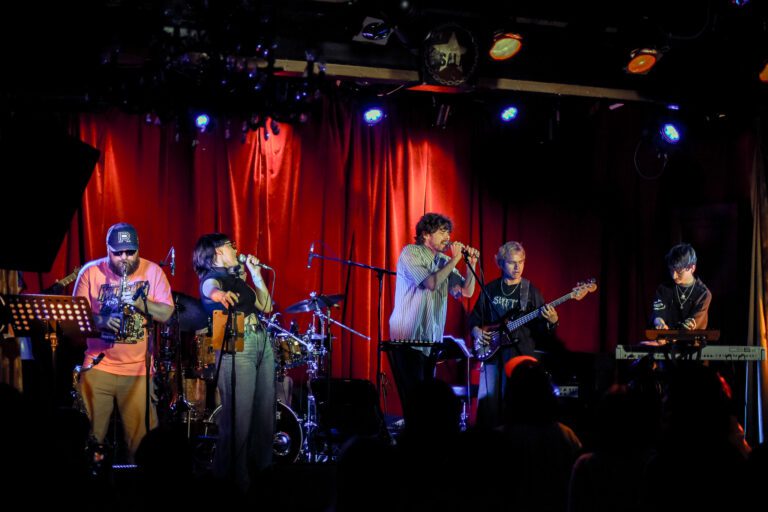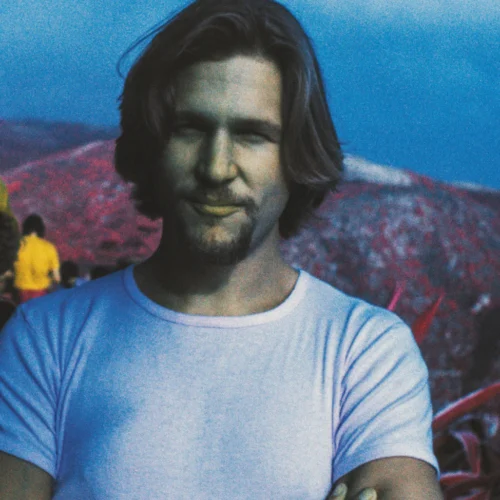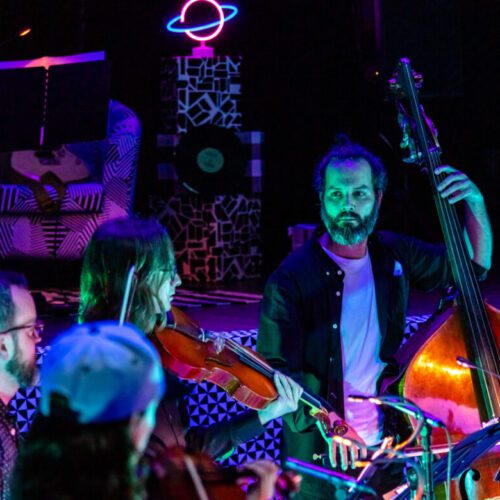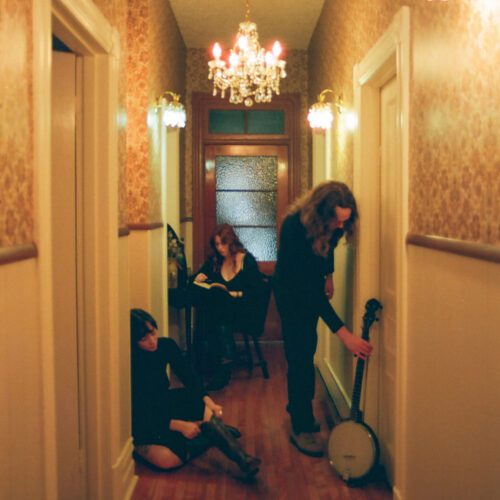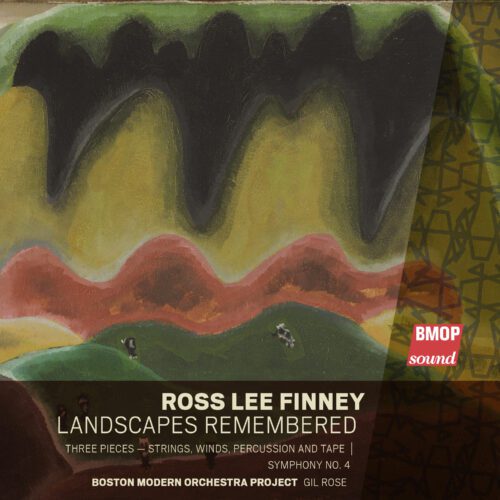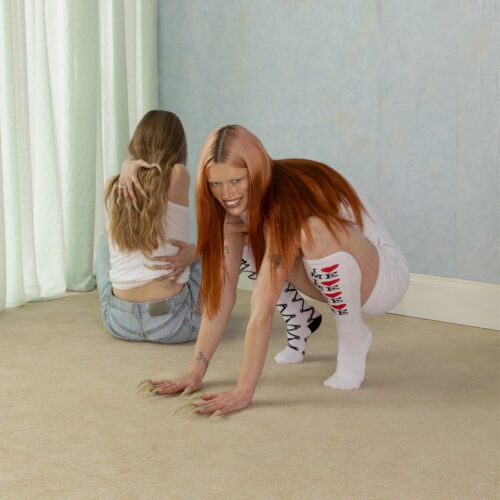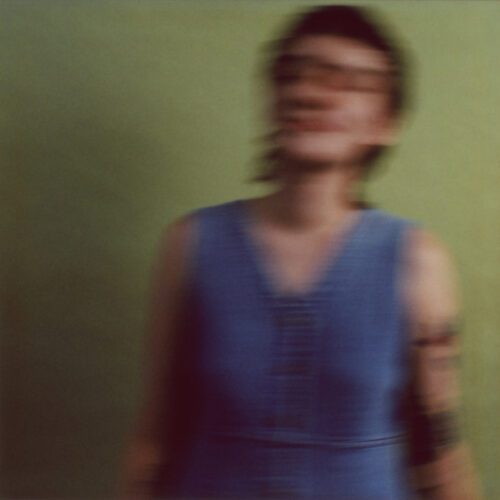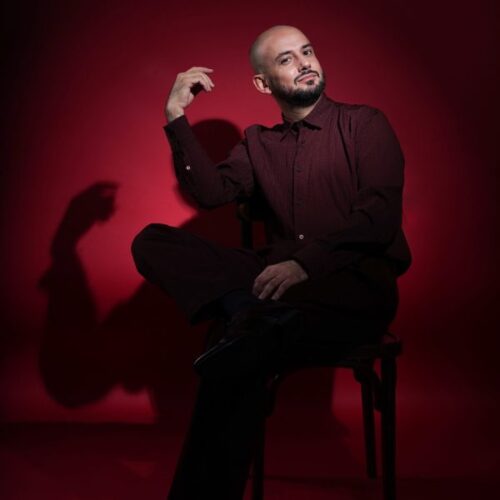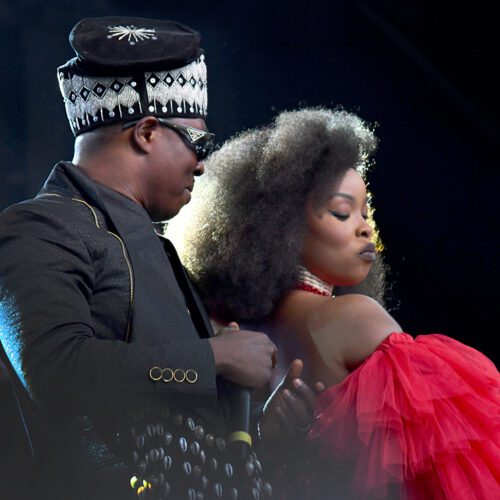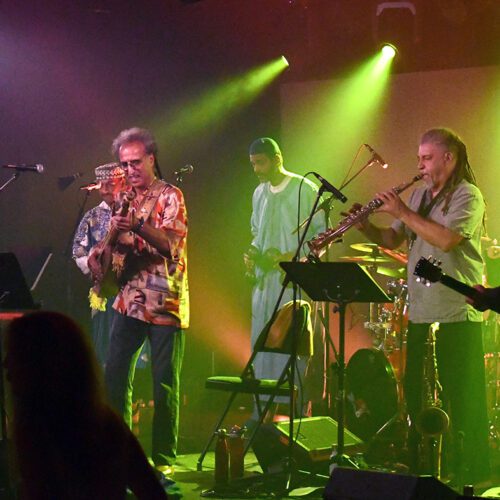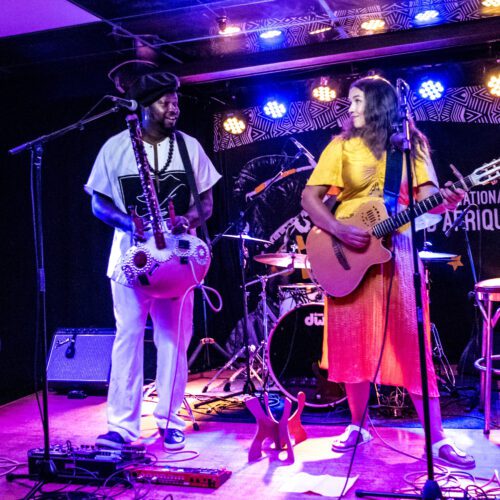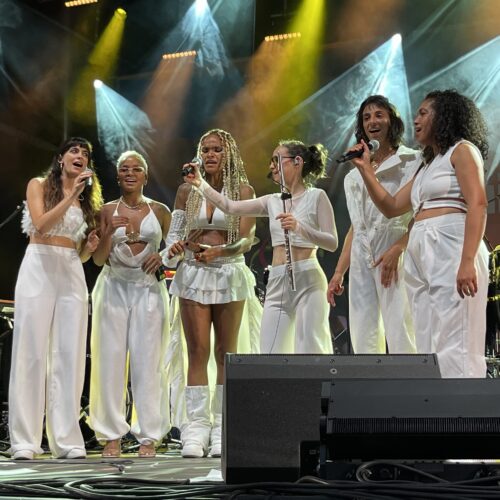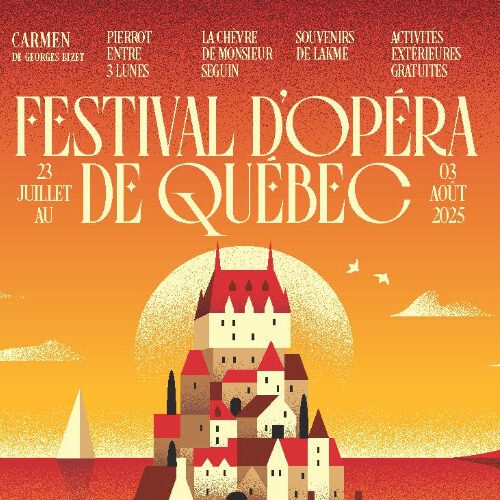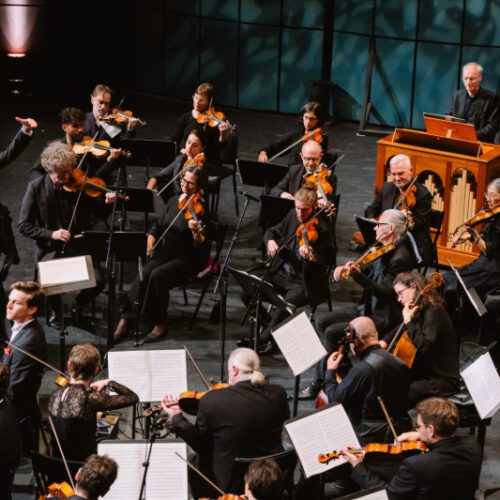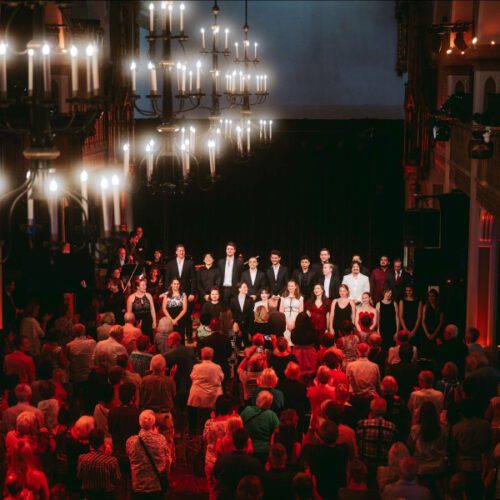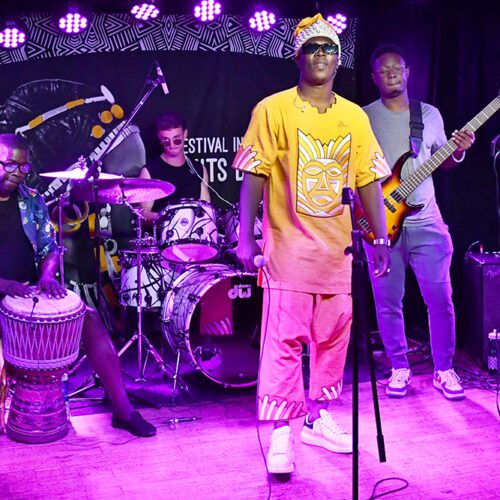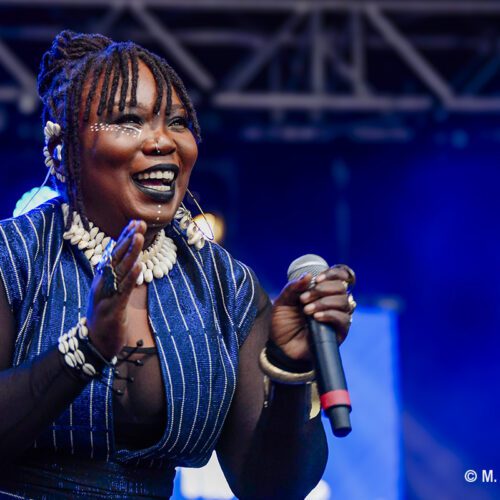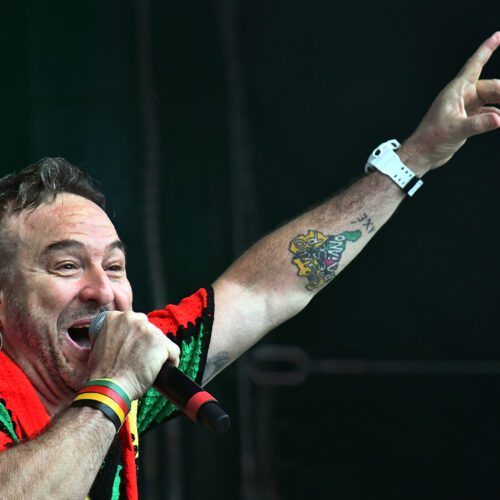This week, courtesy of locals Karneef and Rapallo, La Sala Rossa hosted a night of eclectic cosmic jazz fusion and yachty experimental business pop, doubling as the album release of Karneef’s wacky jazz fusion LP, It’s How You Say It.
Mergers & Bangers: Rapallo’s market moves
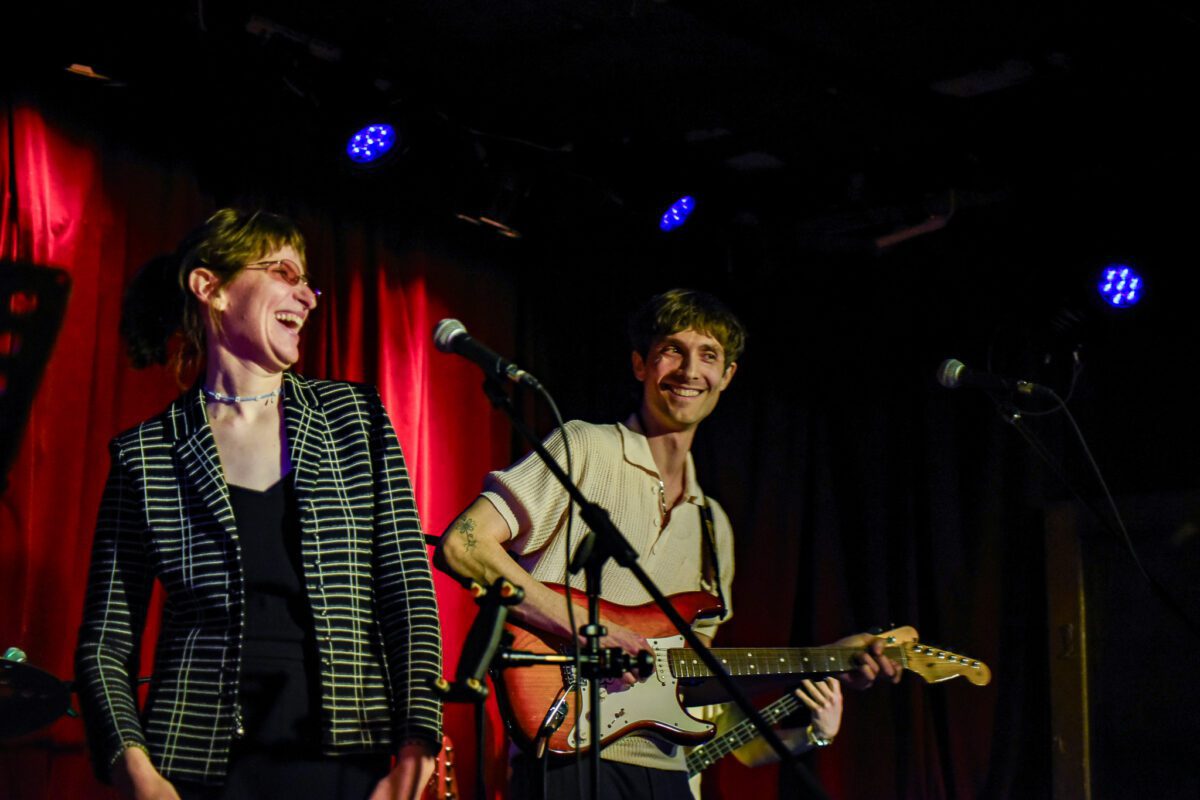
The night began with Rapallo taking the stage, jumping into the beachy disco-funk of “Daryll’s on the News,” and then transitioning into their more business-time-style songs from their debut LP, Merger. You see, Rapallo doesn’t just play their songs—they pitch them, and everyone in the crowd is a would-be shareholder or flush swinger looking to get down. The playful dueling vocals and absurdist stories between guitarist Nick Lanyon and the mesmerizing Kyla Jolene feel a bit like Kenny Loggins dueting with Olivia Newton-John, and the whole slacker business pitch really works for the live show. But it’s more like being on a cruise with nonchalant CEOs and drinking too many Mai Tais than a full-on Q4 meeting. “The Alkalite” might be one of the catchiest songs I’ve heard live in a while, and live, it’s a wonderful fever dream. Lanyon’s lead guitar on the track “The Cage” is absolutely disgusting and hypnotic—the man can shred like Steve Vai and brush it off like nothing.
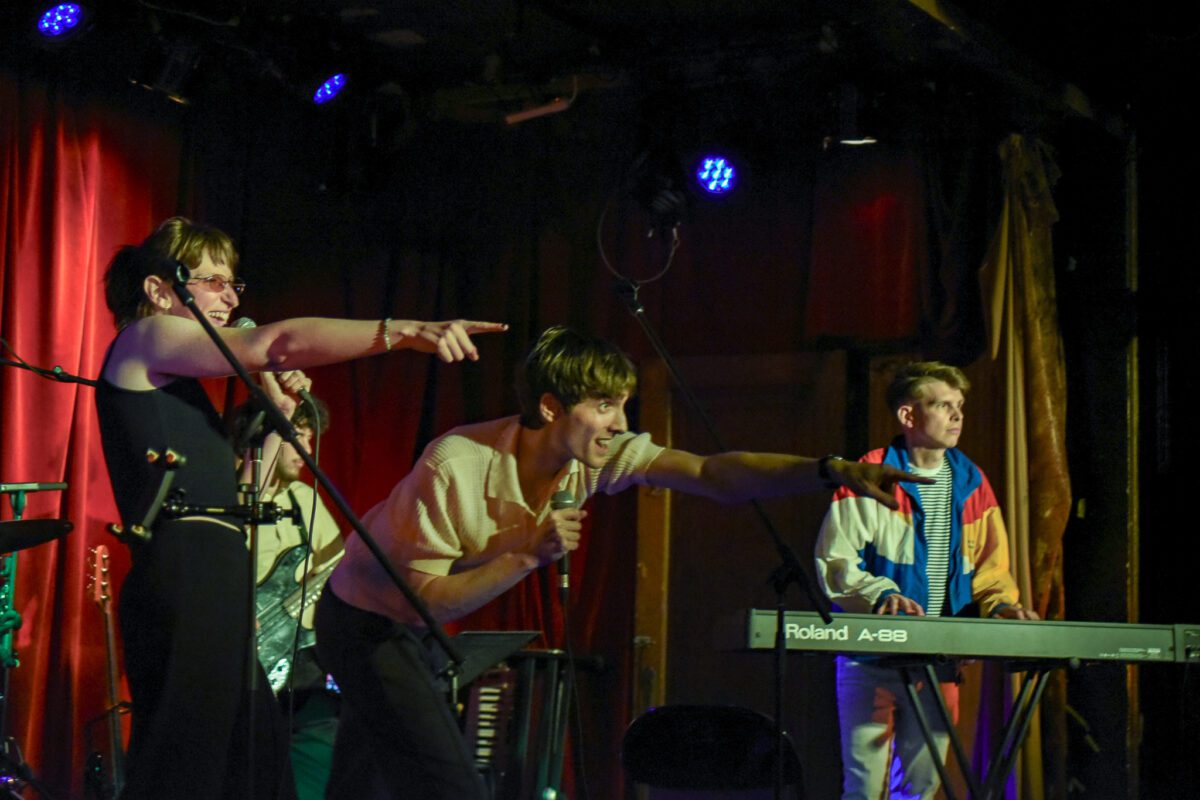
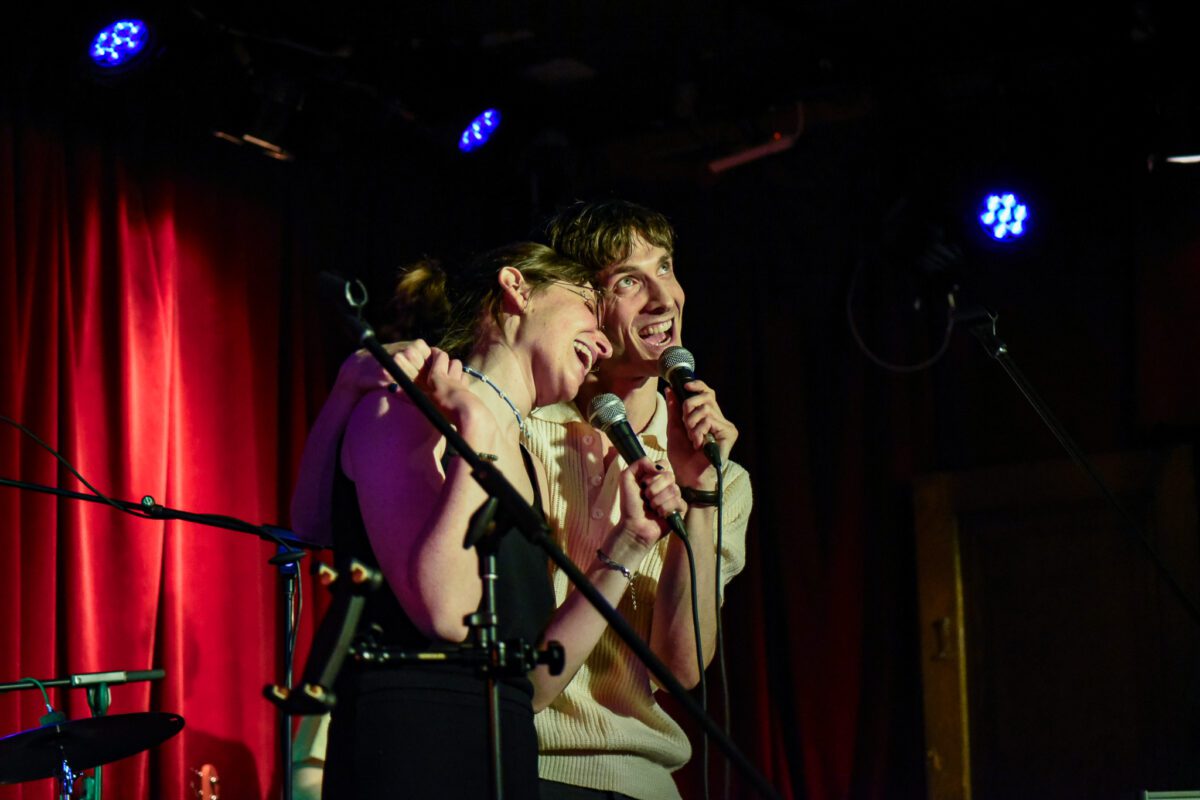
Rapallo’s vibe is all about the poppy hook to get you moving, with amazing lyrics like “Don’t call it a fantasy / You just live in it / All of the ivory in the key of C,” from “Lion’s Share.” A song like “V.I.P.” is a synth-heavy anthem with a fantastic ’80s key-man solo by Isaac Maynes—sounds like Tears for Fears if they were stuck in a WeWork. And “Breathing Underwater” is very Supertramp-coded. Rapallo’s music is pure corporate metaphor: love as mergers and hostile takeovers, vulnerability as a depreciating asset. The contrast couldn’t have been more perfect: Rapallo demanding we invest, and Karneef demanding we feel.
Liquidity in 11/8 Time: Karneef’s It’s How You Say It, in beautiful freefall
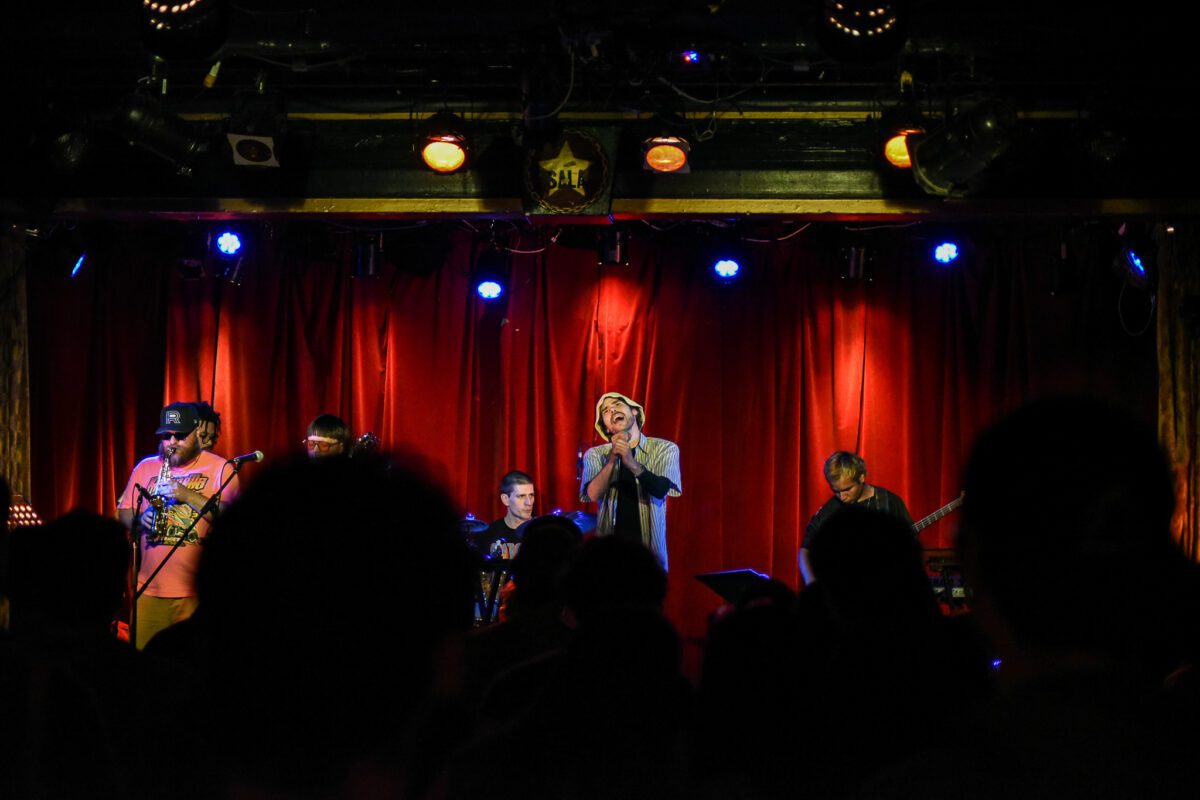
Jazz has always had somewhat of a resurgence, and within the last 15 or so years, artists like Thundercat, BADBADNOTGOOD, and Snarky Puppy have been leading the charge into the mainstream. But with his live show and album It’s How You Say It, Karneef should be added to that list.
As Karneef stepped onto the stage with his six-piece jazz band, the lights dimmed and a warm, jazzified breeze drifted in. The music was smooth, chaotic, and deeply committed to emotional communication. Saxophone, keyboard, bass, hazy guitar work, and a syncopated whirlwind of drums swirled around in polyrhythmic negotiations. Karneef is the mad vocal orchestrator of this wild group of too-talented musicians—breaking out into passionate, soulful growls and shaking his head in disbelief at the raw talent of his band: Rodolfo Rueda on bass, Max Lazich on drums, Ryan Nadin on guitar, Teddy Kadonoff on backing vocals and bass trombone, Cedric de Saint-Rome aka Housefly on keyboards, and Evan Shay on saxophones.
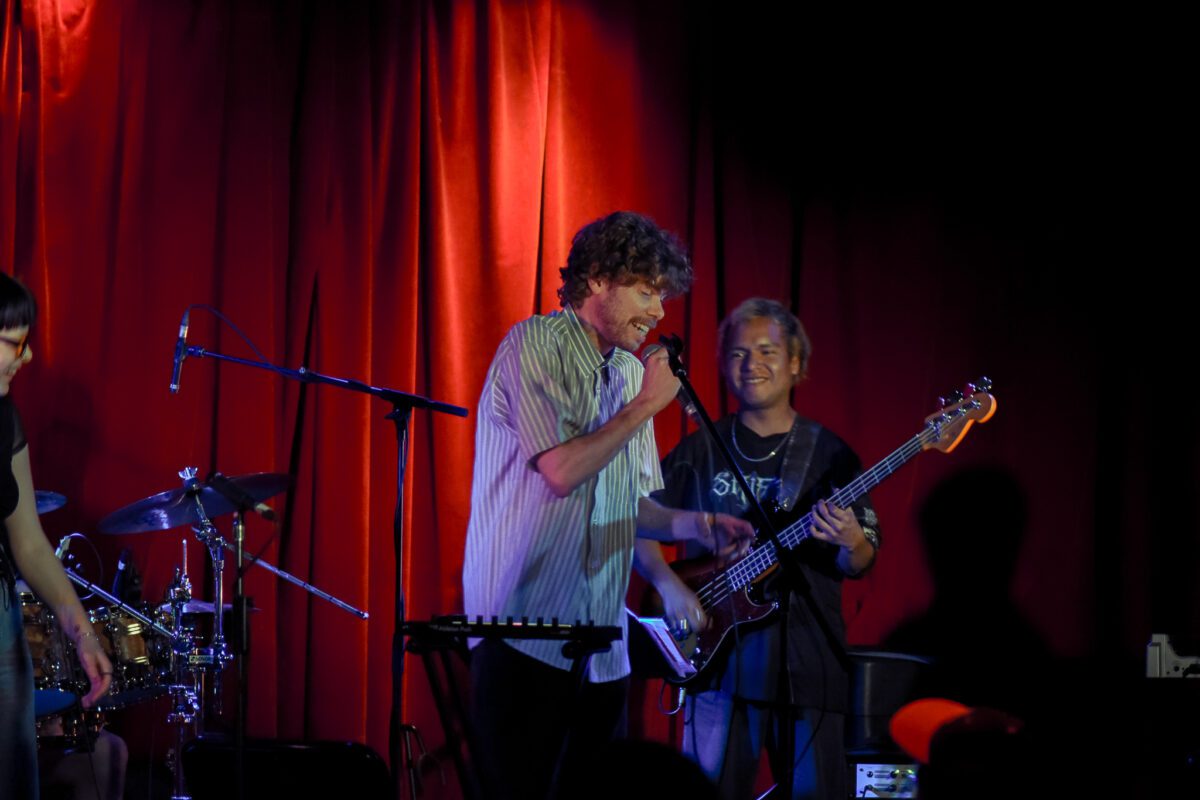
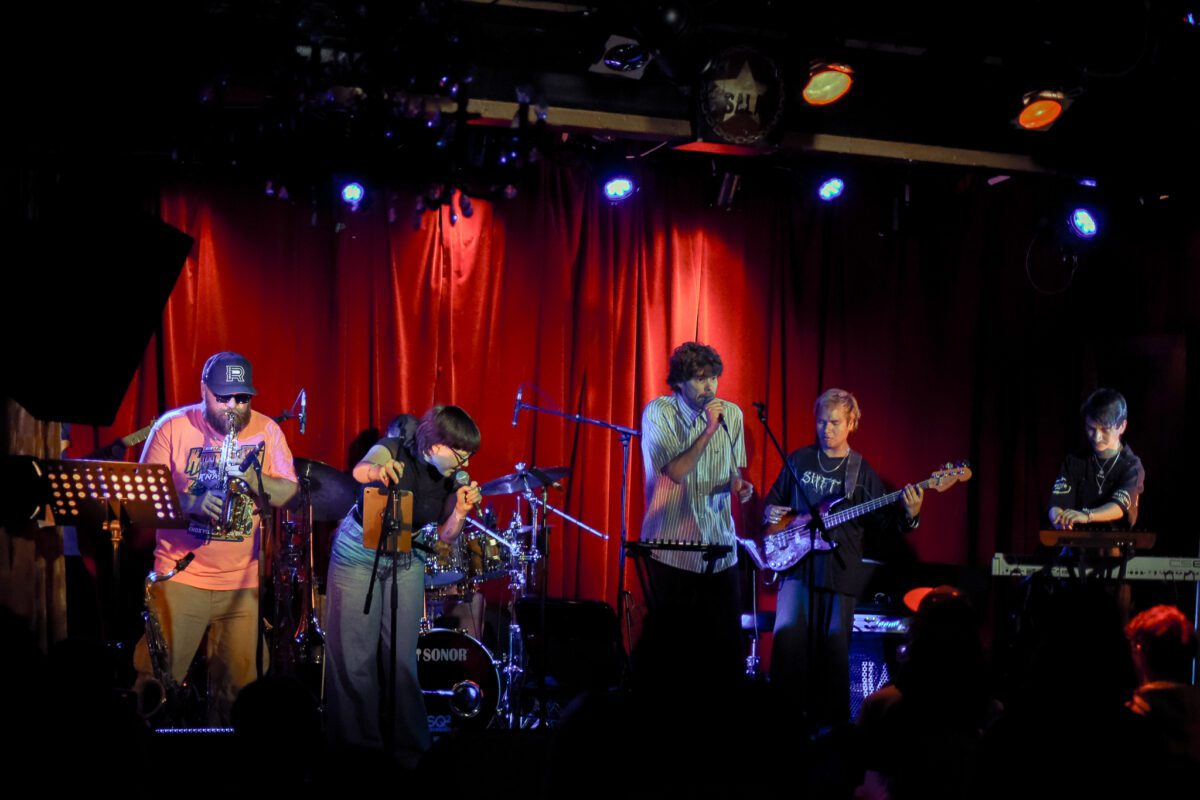
Their set felt intergalactic, like the band had tapped into a transmission from a parallel universe where fusion is the dominant energy source and feelings are traded like rare minerals. Karneef, equal parts wizard, preacher, and jazz court jester, steered the chaos like a man possessed by melody itself. His voice ricocheted between guttural chants and falsetto pleas, especially during “If Only You Could See Your Face Right Now,” which gave me huge Awaken, My Love! by Childish Gambino vibes. The drums by Lazich were astonishing. You know a jazz drummer is too good when you phase out and start questioning whether your hands are even correctly attached to your body. Lazich must have been raised in a metronome factory.
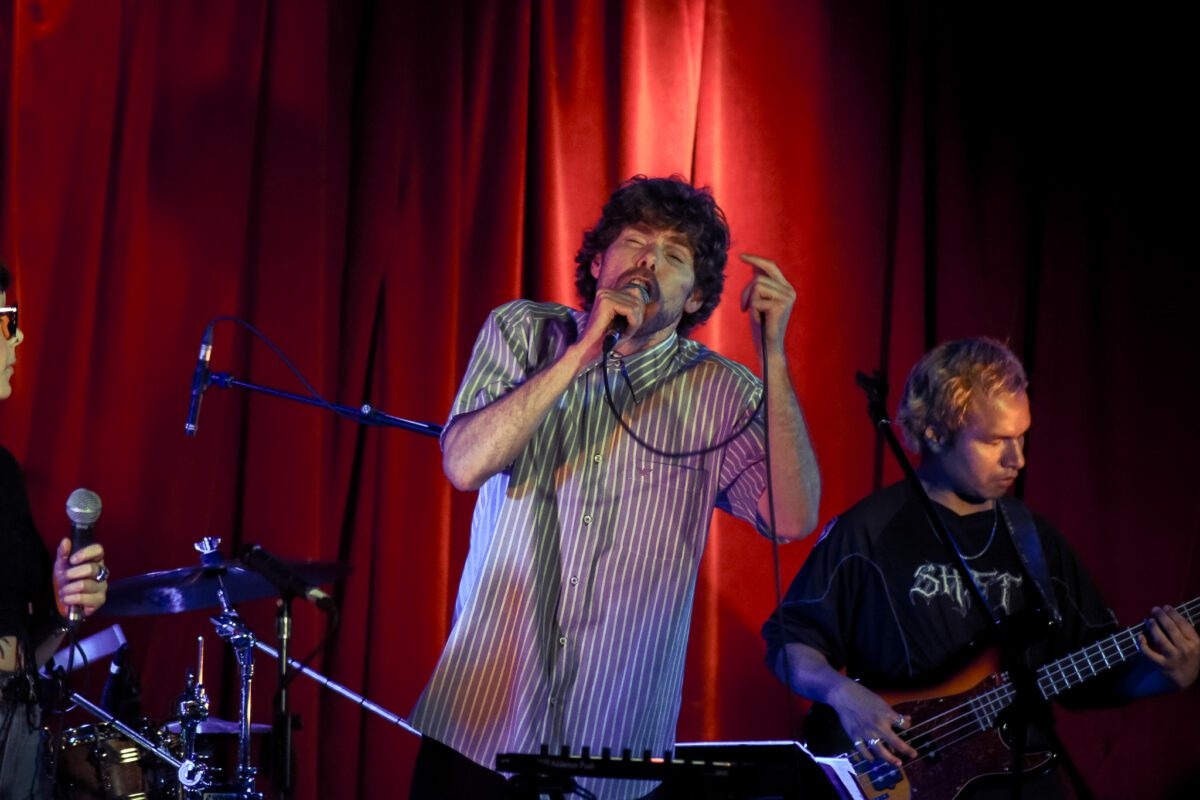
Karneef’s style of jazz fusion is constantly breezing on a sonic tightrope; just confusing enough for the true jazz heads, and just accessible enough for people looking to groove. A song like “Insides Match the Outside” will lay down a steady groove, abandon it like a bad lease, and then move into a polyrhythmic fire escape of invention. And then you have the wacky stage presence of Karneef—jumping around the stage like a whimsical jester and conductor, grounding the audience for moments of humble reprieve. Honestly, we are probably still recovering.
